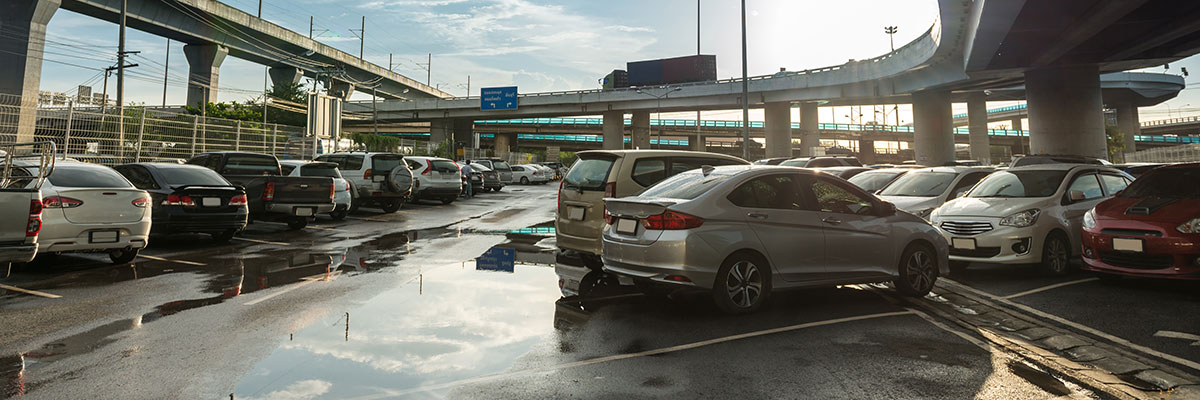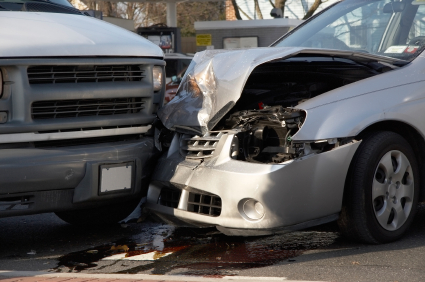
When you stop and think about it, distractions while driving are everywhere. Almost every driver on the road, if they’re honest, can think of an instance where they were distracted behind the wheel.
While most of the time, these brief distractions produce no significant consequences, many wind up causing car accidents that lead to serious injuries or death. In fact, the chance of an accident immediately increases once a driver takes their focus away from the primary task of driving.
Distracted driving statistics
According to data from the National Highway Traffic Safety Administration (NHTSA), distracted driving caused 15% of car accidents in the U.S. in 2019—resulting in 3,142 fatalities and 424,000 injuries.
What is distracted driving?
To better recognize and combat distracted driving, it’s important to understand what it involves. The U.S. Department of Transportation defines distracted driving as “any non-driving activity a person engages in that has the potential to distract him or her from the primary task of driving and increase the risk of crashing.”
Cell phone use and texting are the most cited examples of distracted driving. However, the term covers a broad range of activities while driving and can include just about anything. Some other common examples include:
- Eating
- Drinking
- Grooming
- Talking to passengers
- Reading maps
- Using a navigation system
- Adjusting a radio
Even simply getting lost in thought while worrying about work or family issues can be a big distraction on the road as well. It’s important to remember that anything that takes your focus off of the road puts you, your passengers, other drivers and bystanders’ safety at risk.
Parking Lots—A Magnet for Car Accidents
Learn what to do after a parking lot accident in Denver and how to prove liability.
Multiple studies show the dangers of texting and driving
Sending a text message while driving is one of the most dangerous forms of distracted driving.
A 2009 experiment by Car and Driver magazine editor Eddie Alterman on an abandoned air strip showed texting to be more dangerous than drunk driving. When driving at 70 mph while legally intoxicated, it took Alterman an additional 15 feet to stop. By comparison, sending a text at that same speed added an additional 30 feet to this stopping distance.
A University of Utah study also draws parallels between cell phone use/texting and drunk driving. Results from the study concluded that using a cell phone while driving reduces reaction time to that of a driver who has a blood-alcohol level of 0.08% concentration (which is considered legally intoxicated).
Another study by the Virginia Tech Transportation Institute used video cameras in vehicles to study the drivers on the road. Analysis of the data found that the majority of accidents or near accidents involved some sort of distracted driving, with texting being the greatest risk.
In fact, the study found that drivers of commercial trucks who text have a 23.2 times greater chance of being distracted and getting into a wreck than non-distracted drivers.
Colorado laws on distracted driving and cell phone use
Colorado has two laws related to distracted driving specific to cell phones:
- No driver under 18 may use a cell phone while driving (unless it’s for an emergency).
- All drivers in Colorado are prohibited from texting while driving.
The penalty for texting while driving is a $50 fine for the first offense and a $100 fine for the second.
Regardless of any laws prohibiting it, it’s just plain wise to pull off the road before sending a text message on your phone. If an accident occurs while using your phone, you could be held liable for any damages.
Conversely, if you’re in a car accident with a driver who was distracted due to sending a text message, you can seek compensation for injuries and property damage. As we discussed in our knowledge center article on determining fault in a car accident, violation of a statute like the texting ban is one way to prove negligence on the part of the other driver.
5 Infractions That Can Reduce the Amount You’re Awarded in an Auto Accident Lawsuit
Learn what to do (and not do) after a car accident to recover maximum compensation.
Distracted driving and auto-pedestrian accidents
Pedestrian accidents involving cars have been on the rise in Denver in recent years. According to the Colorado Department of Transportation, pedestrian fatalities reached a record high in 2020, with 93 deaths. The second-highest year on record was 2017, with 92 deaths, followed by 2021, with 91 deaths.
So why the sudden spike in auto-pedestrian accidents?
Of course, there are the usual suspects—drugs and alcohol. But Denver law enforcement also believes the growing problem of distracted driving is putting pedestrians at more risk than ever before.
In a Denver Post article, Lt. Matt Murray, chief of staff to Denver Police Chief Robert White, told reporters, “It’s not just a police problem; it’s a city problem. And the city has to work on a solution.”
And it’s not just inattentive drivers that are being blamed for auto-pedestrian accidents. Walkers, too, are often absorbed in the very same handheld devices as distract drivers. That combination—as the city of Denver is witnessing—can be lethal.
“We have more distracted walkers and drivers checking their text messages and e-mails,” said Lt. Robert Rock, Denver’s head traffic investigator. “People are just not paying attention.”
Although this recent spike has traffic safety officials scrambling for a preventative strategy, the danger of car vs. pedestrian encounters has been an ongoing problem for the city of Denver and Colorado in general. In fact, Denver ranks 29th on the list of most dangerous large metro areas for pedestrians in the country, based on a survey by Transportation for America.
Distracted driving cases in the news
On November 25, 2008, 9-year-old Erica Forney was riding her bike in Colorado Springs when she was struck by an SUV going 25 mph. The driver of the SUV had just completed a phone call and was distracted just long enough to strike the girl, throwing her 15 feet. She died in the hospital 2 days later on Thanksgiving day.
On January 3, 2008, Heather Leigh Hurd was killed by a truck driver in Florida who was distracted while sending a text message. Heather’s father has since been a tireless crusader for establishing texting laws across the U.S.
Another notable accident involved a commuter train driver in Boston who was sending a text to his girlfriend while driving the train. It’s estimated the crash that injured 60 people caused $9.6 million in damage.
Stories like this are all too common across Colorado and the U.S.
NHTSA survey explores attitudes and behaviors on distracted driving
To better understand what people are doing while driving and why drivers get distracted, the NHTSA conducted a phone survey of over 6,000 drivers over the age of 18.
Besides the distractions mentioned above, the survey also found that men more often than women use personal navigation devices (GPS) while driving. Women, on the other hand, are more distracted by kids in the back seat. Reading/sending text messages is especially common in drivers under 25, which is also an age group that drives 2 to 3 times more often than their older drivers.
The survey also revealed that drivers’ feelings on the need for laws on distracted driving, especially on cell phones and texting, were predominantly favorable:
- 71% of drivers support bans on handheld cell phone use while driving.
- 94% of drivers support bans on texting while driving.
Surveys like this one done by the NHTSA provide an opportunity to educate drivers on the dangers of distracted driving and will hopefully help reduce accidents in the future.
Contact a Denver car accident attorney
Even though there are laws specific to cell phones and texting, every driver has the responsibility to maintain their focus on the road. It only takes a split second for tragedy to strike. If you’re the parent of a teen who’s just starting to drive, be sure you educate them about the dangers of distracted driving and the importance of being focused on driving when they’re behind the wheel.
Check out resources like the U.S. DOT website on distracted driving, as well as our car accident knowledge center, for more tips on teaching your teen to avoid a distracted driving accident. But remember that leading by example is typically the best way to help them learn.
If you’re involved in an accident with a distracted driver, you may be eligible for substantial compensation. To discuss your individual case, contact The Babcock Law Firm today for a free consultation.



